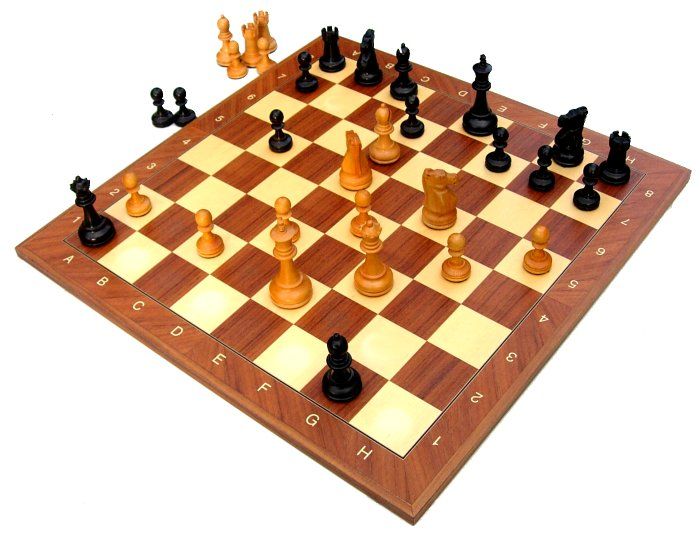How To Play: Chess
Quick Summary
Learning How To Play chess is a blast with friends. Start with understanding openings, then sharpen your middle game tactics and endgame strategies. Use the right pieces, know the rules, and keep it fun. Stick with it, and soon you’ll be calling checkmate more often!

Overview
So you want to learn How To Play chess and, more importantly, how to win? You’re in the right place! After many hours of arguing with friends over who actually touched their bishop first, I’ve put together this guide. You’ll find an outline of the chess rules and my very best strategies for coming out on top (or at least not flipping the board in frustration).
What’s in the box
- 1 chessboard
- 1 white king
- 1 black king
- 1 white queen
- 1 black queen
- 2 white rooks
- 2 black rooks
- 2 white bishops
- 2 black bishops
- 2 white knights
- 2 black knights
- 8 white pawns
- 8 black pawns
How To Play Chess: Rules Summary
Setup
- Place the chessboard with a white square at the bottom right for each player.
- Line up all pieces on the two rows closest to each player.
- Arrange from left to right on the back row: rook, knight, bishop, queen (on her color), king, bishop, knight, rook.
- Place all eight pawns in the row in front of the main pieces.
Gameplay
- White always moves first. Players then alternate moves.
- Move each piece as allowed: pawns move forward, knights jump in L-shapes, bishops move diagonally, rooks go straight, queen does both, and king moves one square any direction.
- You can capture opponent’s pieces by moving onto their square.
- Always plan your move and look out for threats!
Winning
- The goal is to checkmate the opponent’s king—trap it so it cannot avoid capture.
- A game can also end in a draw or stalemate (nobody wins).
Special Rules & Conditions
- Pawns have a special first move: they may move two squares forward.
- En passant lets you capture a pawn that just moved two spaces, but only right away.
- Castling lets you swap places with your rook, but only once per game if conditions allow.
- If you reach the other end with a pawn, promote it to a queen, rook, knight, or bishop.
When learning How To Play chess, remember: setup is key, every move counts, and there are some surprising rules that can win or lose the game for you!
Best Chess Strategies
Start Strong: Mastering the Chess Opening
The chess opening is like picking the best seat at a concert. It sets the whole tone! When I first learned how to play chess, I would lose my queen faster than I spill coffee. But things changed once I followed some opening principles. Below, I’ll share the moves that rescued my pride.
Control the Center
- Move your pawns to the center early.
- Develop minor pieces toward key squares.
Develop Pieces Quickly
- Get your knights and bishops out fast.
- Don’t move one piece many times.
Protect the King
- Castle early to keep your king safe.
- Avoid opening lines that expose your king.
Don’t Grab Too Many Pawns
- Material is nice, but don’t get greedy.
- Instead, keep your pieces active and coordinated.
Stick to these tips, and you’ll win more games—and keep your friends guessing how you got so good at how to play chess!
Mastering the Madness: Middle Game Tactics for the Win
Attack Your Opponent’s King
While your pieces are out on the board, remember – offense is the best defense in the middle game. Here’s what I learned the hard way while playing How To Play chess with my friends:
- Use pins to trap key pieces.
- Set up discovered attacks for surprise checks.
- Don’t ignore the humble pawn storm. They really do mess up palaces.
Control the Center
If you lose control of the middle, you’re toast. Ask my rook: he spent three turns boxed in by my own pawns. Try these:
- Occupy empty central squares with minor pieces.
- Push central pawns to open files.
Spot the Weaknesses
Suddenly realizing my queen was about to get trapped was a wake-up call. Always look for:
- Loose pawns or pieces left behind.
- Open king positions ready for a sneak attack.
Endgame Secrets: How To Play Chess Like a Pro (When Everyone Else Is Tired)
Keep Your King Active
Now that most pieces are gone, your king should stretch his legs. He’s not royalty anymore—he’s a brawler! So:
- March your king to the center.
- Avoid enemy pawns and queens like you avoid gym memberships.
Promote Those Pawns
Pawns are now the main event. Because queens are fun!
- Support pawns with your king.
- Block enemy pawn promotions at all costs.
Watch for Tricks
Lastly, tricks come out when folks get desperate. Therefore, always:
- Scan for stalemate traps.
- Guard against surprise checkmates.
Final Thoughts: Checkmate Your Friends, Not Your Fun!
Look, learning How To Play chess well can feel like eating soup with a fork — tricky at first, but you get better (and less messy) over time. Stick to these tips, and soon you’ll be dropping forks… I mean, checkmates… all over the board. Remember, it’s not about winning every time. It’s about having a blast and maybe, just maybe, not getting schooled by your little cousin again. Happy playing!
Want to know what we think of Chess? Read our detailed review of Chess here

